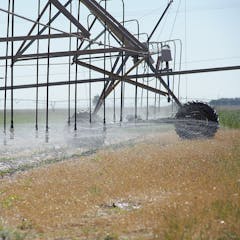
Articles on US agriculture
Displaying all articles

Before World War II, pathogens in milk accounted for 1 in 4 cases of foodborne diseases in the US. Pasteurization reduced this figure to less than 1%.

Inert ingredients are added for purposes other than killing pests and are not required under federal law to be tested for safety or identified on pesticide labels.

Conventional agriculture offers farmers few choices about which crops to grow or how to raise them. A new approach uses computing to construct better strategies with lower environmental impacts.

Agriculture is one of the most dangerous industries in the US, with workers exposed to vehicles, chemicals and heavy equipment. Women working on farms face another risk: sexual assault.

A 90% crop loss in the Peach State may sound like a disaster, but Georgia isn’t actually the Big Apple of peach production that it claims to be.

While mRNA vaccines are designed to last longer in the body than mRNA molecules typically would, they are also tested to ensure they are eliminated from livestock long before milking or slaughter.

Even if you don’t live near farm country, you’ve got a stake in the upcoming farm bill – including what kind of farms your tax dollars support.

Corporations restrict what farmers can do with their own seeds, as well as their farm equipment when it breaks down.

Plant breeding, informed by genetic analysis, could be critical to the future of one of the world’s oldest crops.

Farmers are contending with huge spikes in fertilizer prices. The Biden administration is paying US companies to boost synthetic fertilizer production, but there are other, more sustainable options.

Growing native grasses as cattle forage is an example of working lands conservation – balancing human use of the land with conservation goals.

Huge single-crop fields attract bees in such numbers that they spread parasites to one another. Planting diverse mixes of flowers around fields helps spread out pollinators and keep them healthy.

Studies suggest that seeds coated with neonicotinoid insecticides may harm nontarget insects, mammals and birds. In response, states are starting to restrict use of these products.

The US has required motor fuels to contain 10% biofuels since 2005. As this program nears a key milestone in 2022, farm advocates want to expand it while critics want to pare it back or repeal it.

An expert on organic agriculture argues that the US is missing an economic and environmental opportunity by not working to scale up organic production.

Four out of five Americans regularly buy some kind of organic food. An expert on the industry says more federal support could greatly expand organic farming and its environmental benefits.

Indigenous people in the US have high rates of food insecurity and dietary-related health problems. Any attempts to address the problem must start with land justice, argues a scholar of Native health and food.

Installing solar panels over California’s 4,000 miles of canals could generate less expensive, renewable energy, save water, fight climate change – and offer a solution for the thirsty American West.

Farmers can help slow climate change by mixing native grasses into croplands, restoring wetlands and raising perennial crops. These strategies also conserve soil and water and build new markets.

An invisible crisis is brewing in US farm country as the overpumped Ogallala-High Plains Aquifer drains. The key drivers are federal farm subsidies and the tax code.
